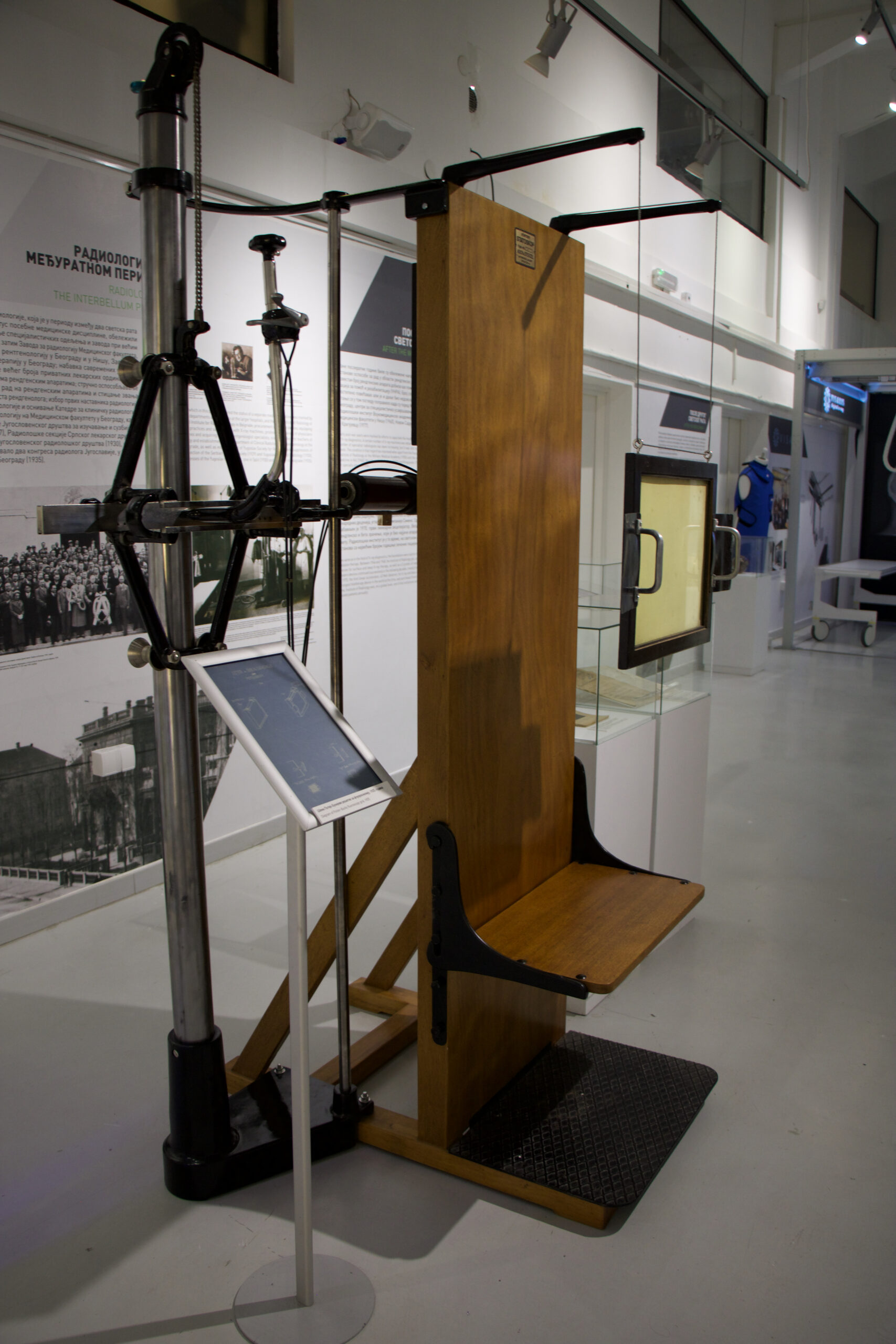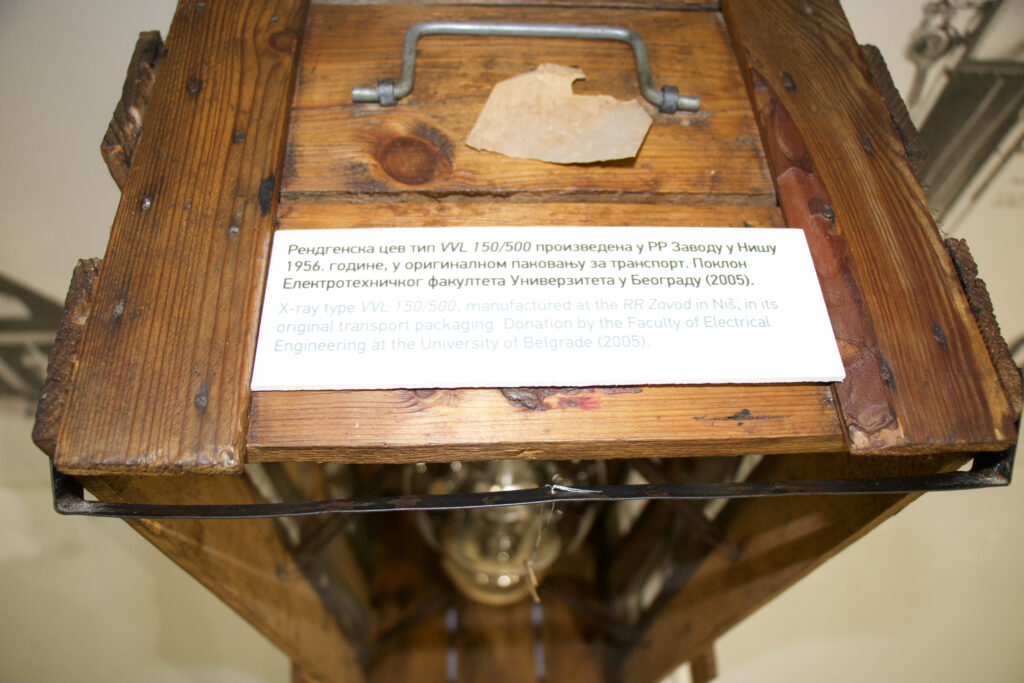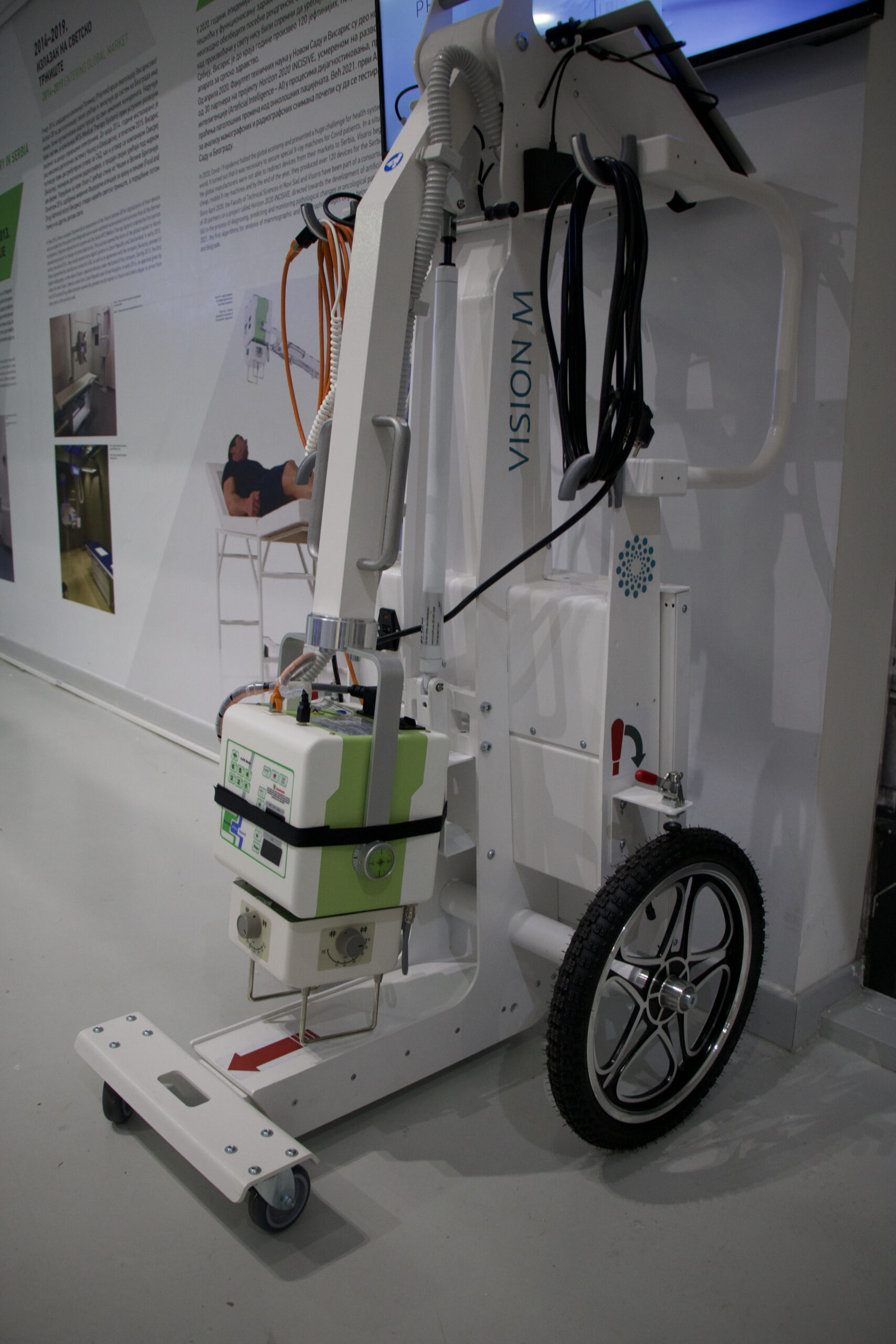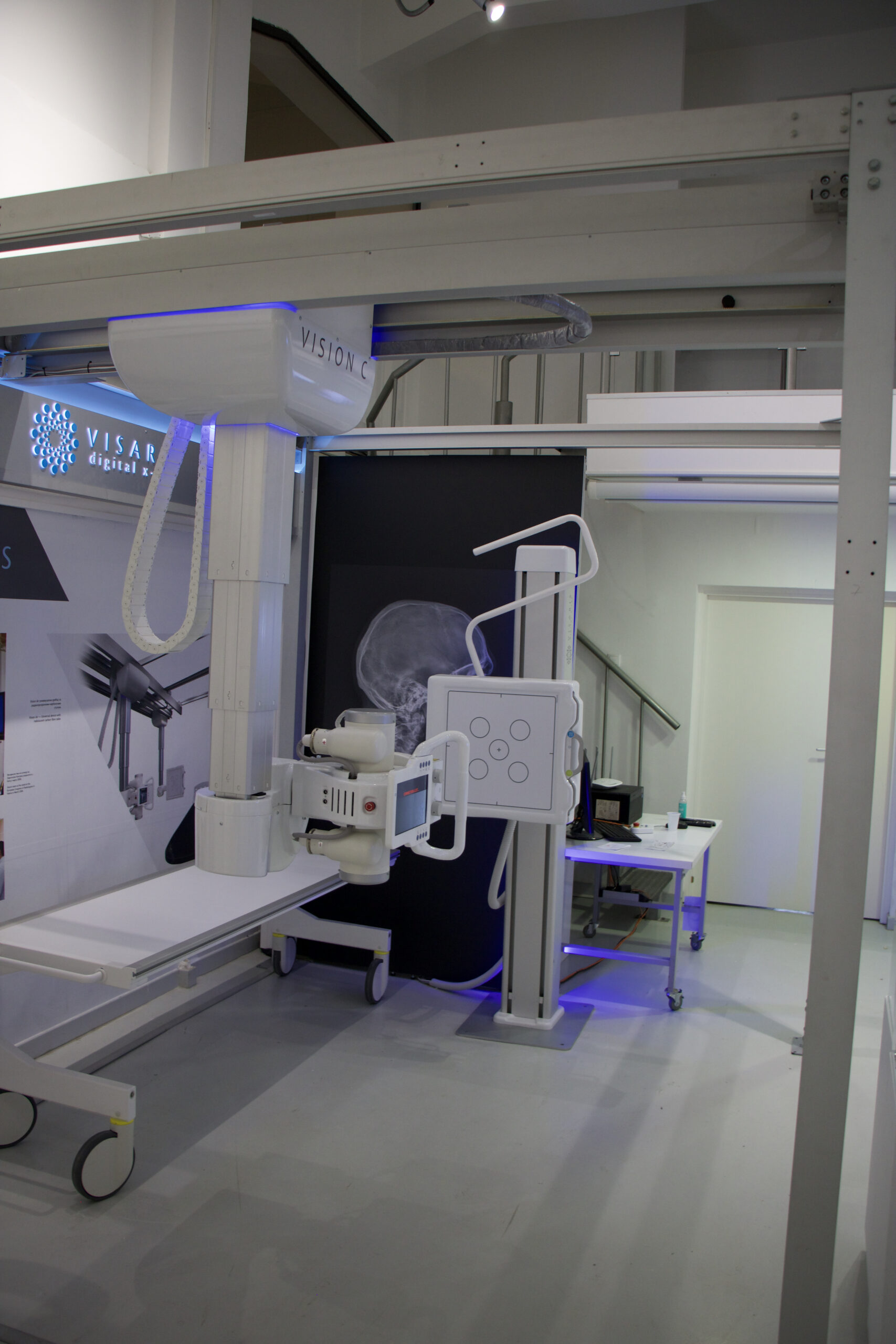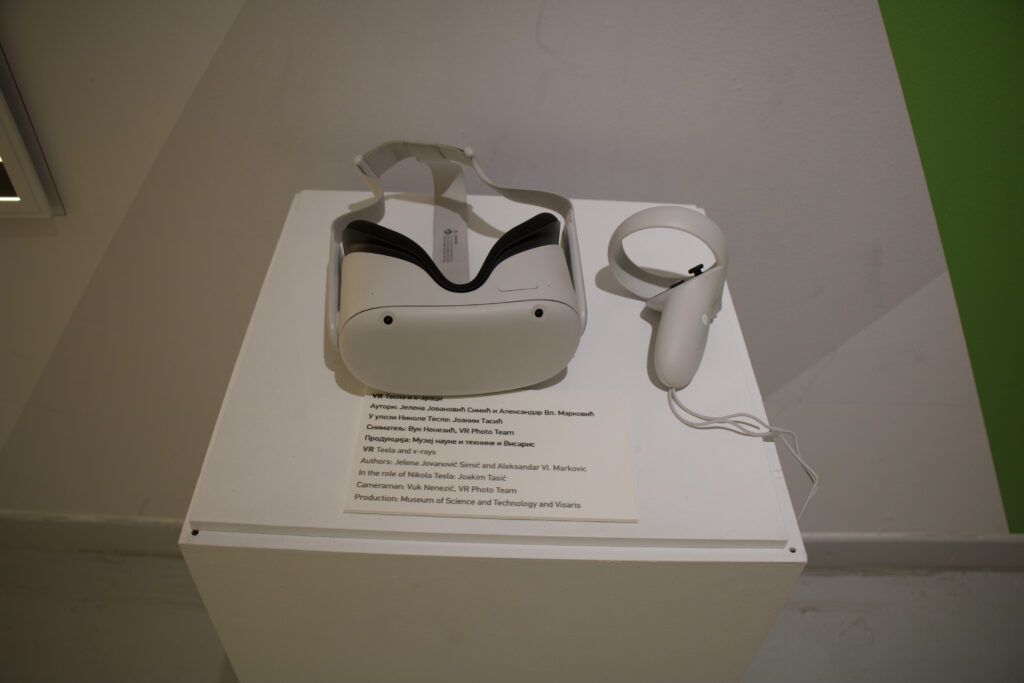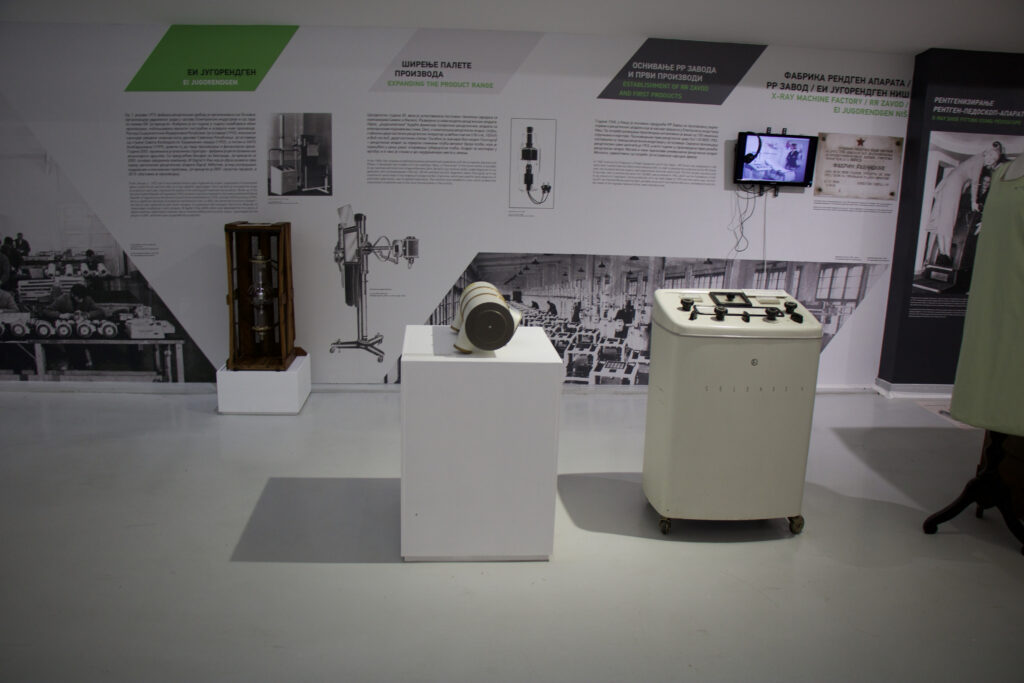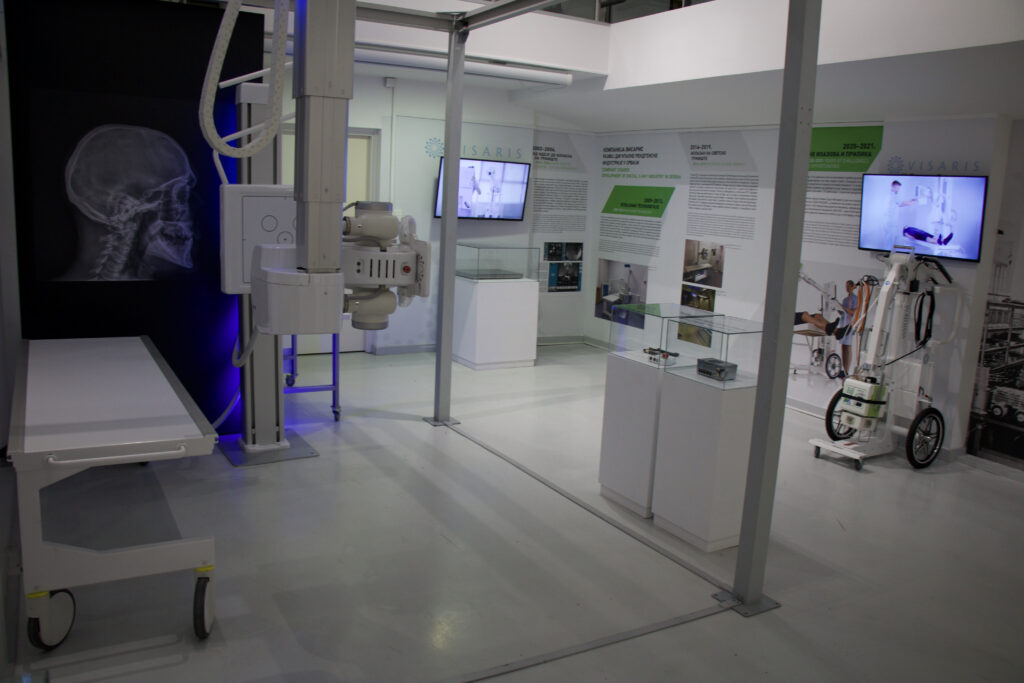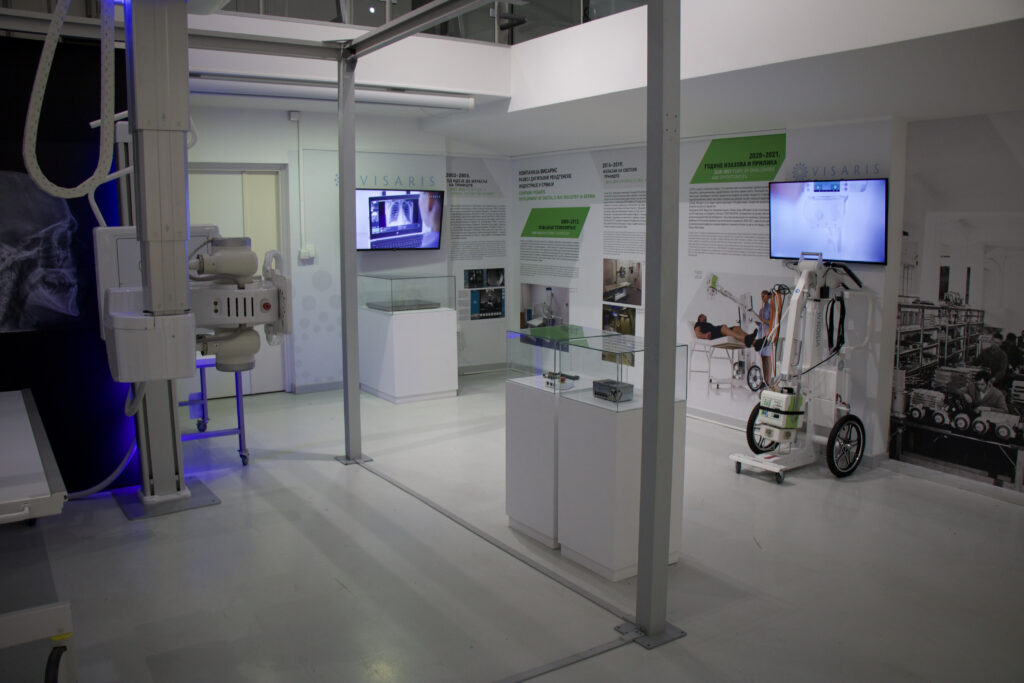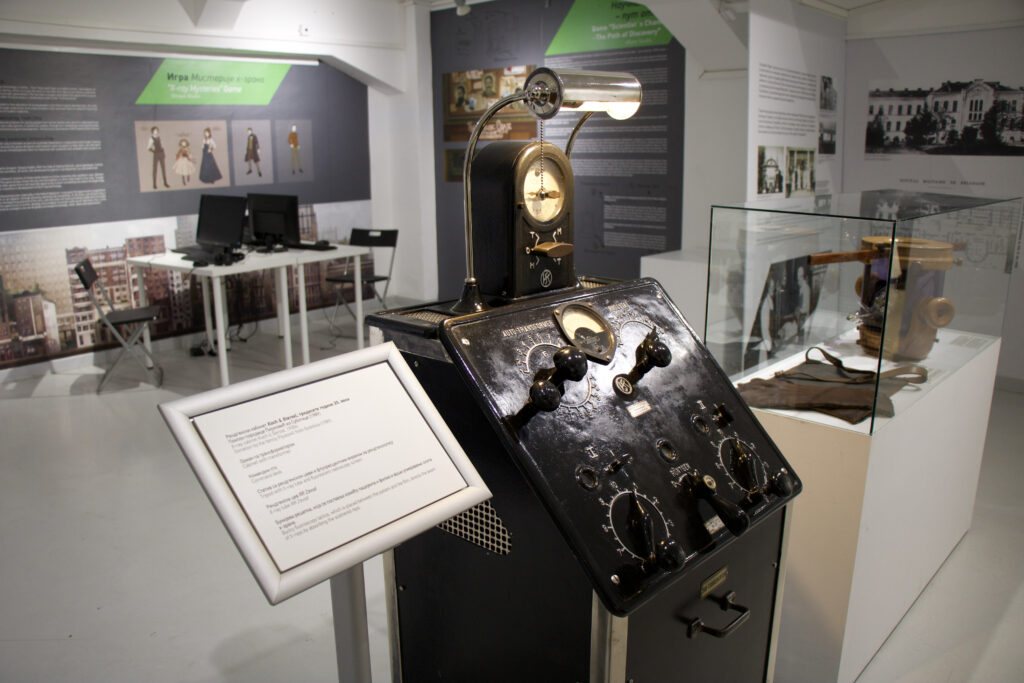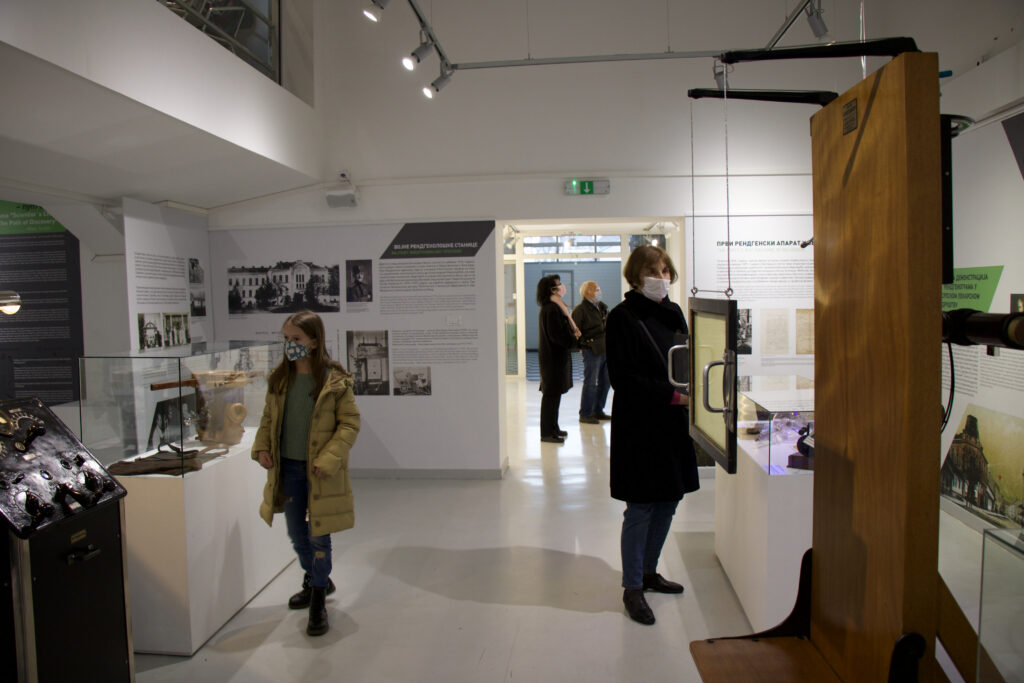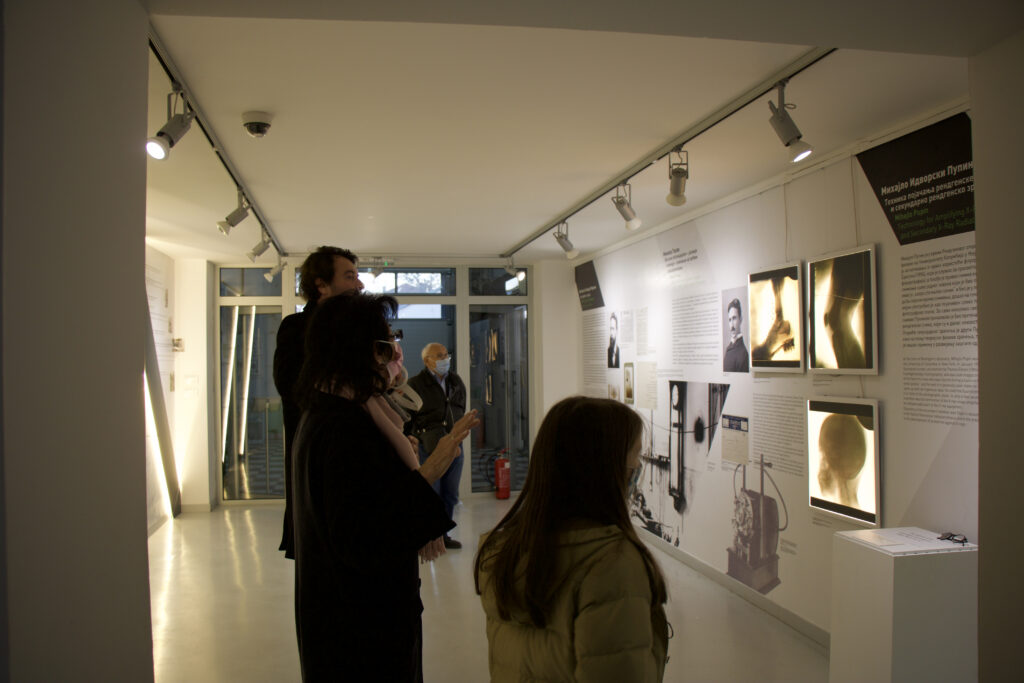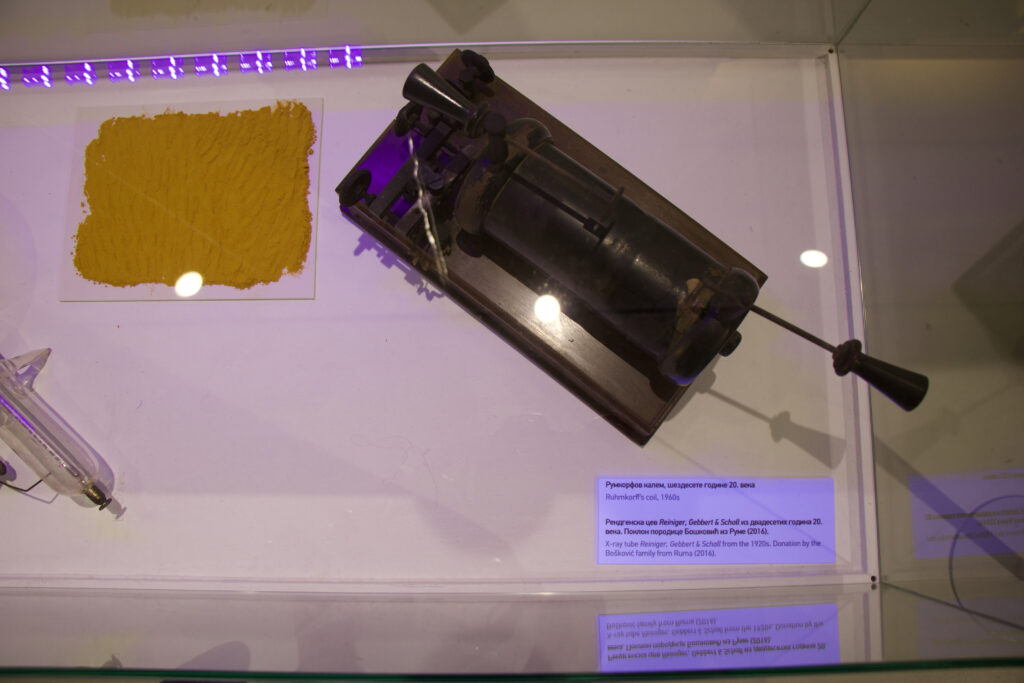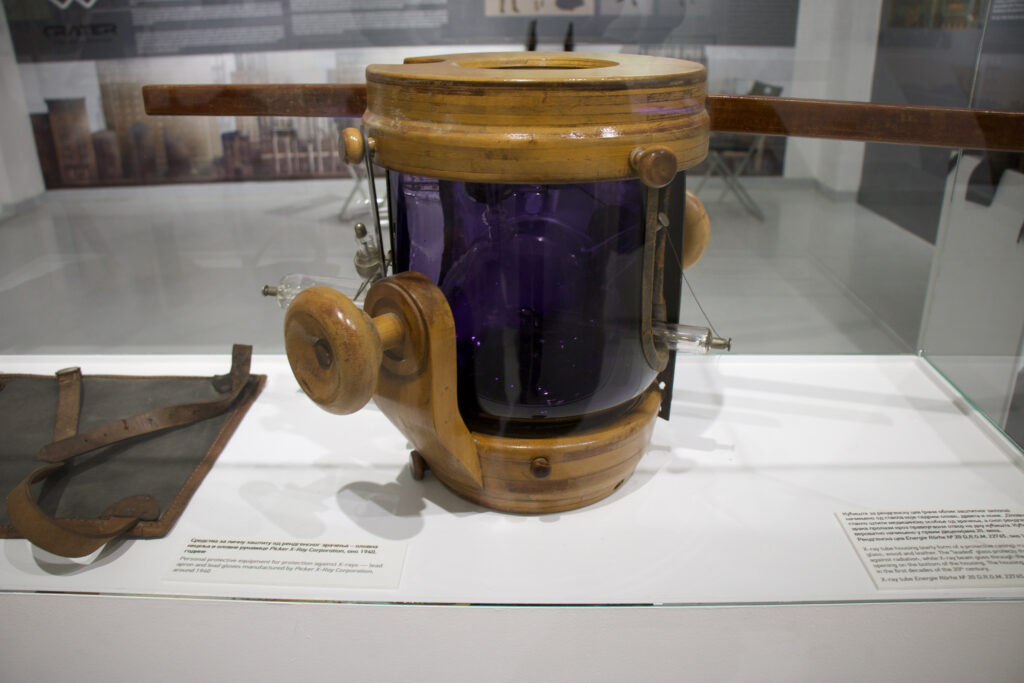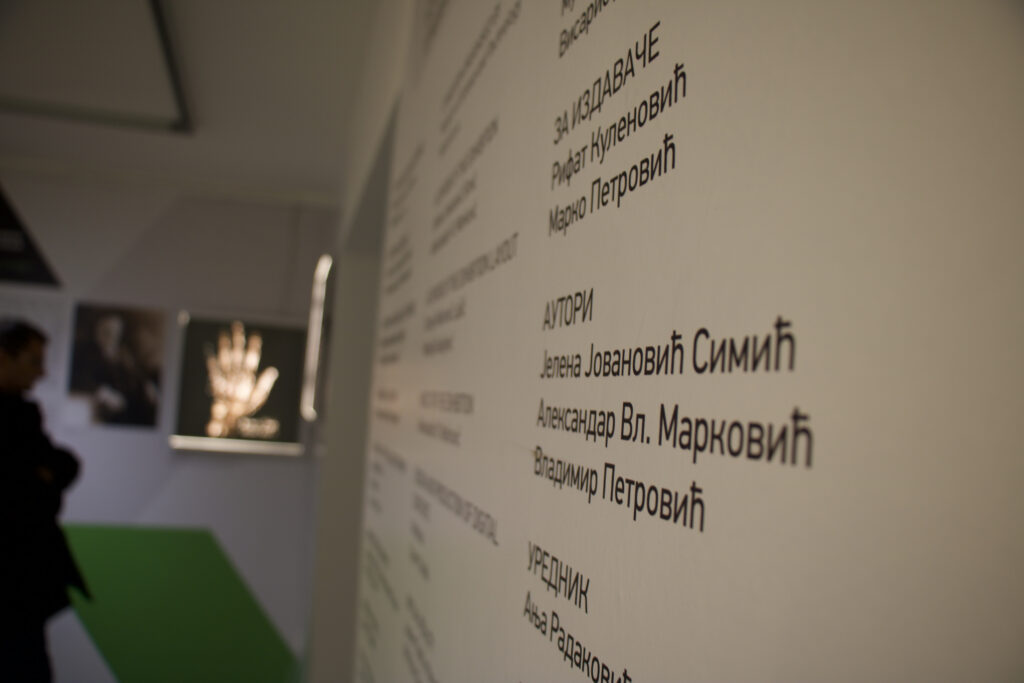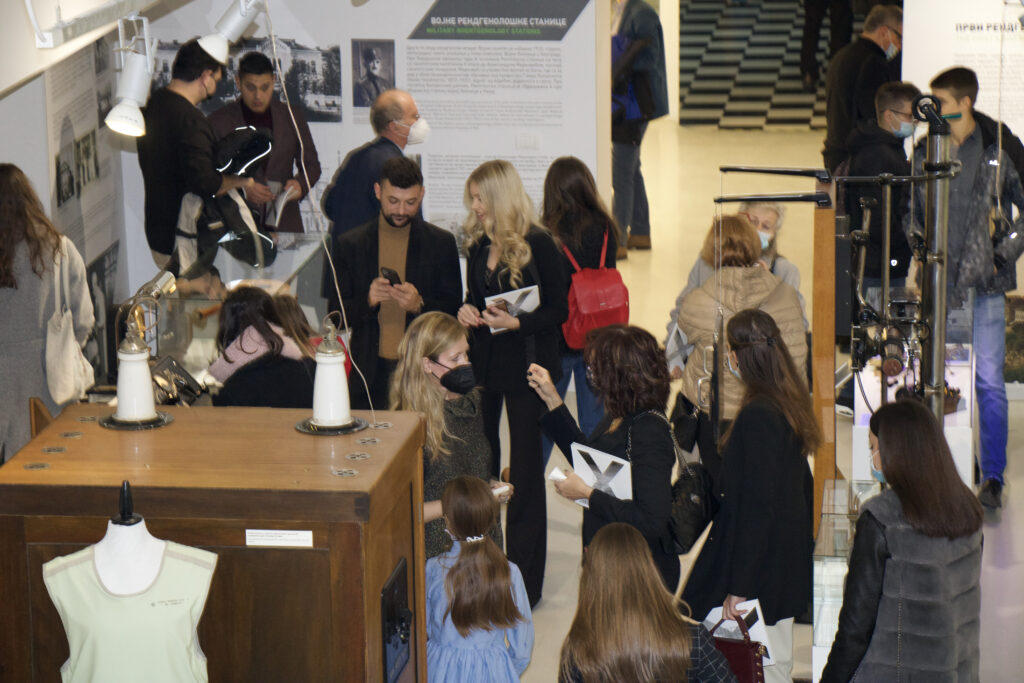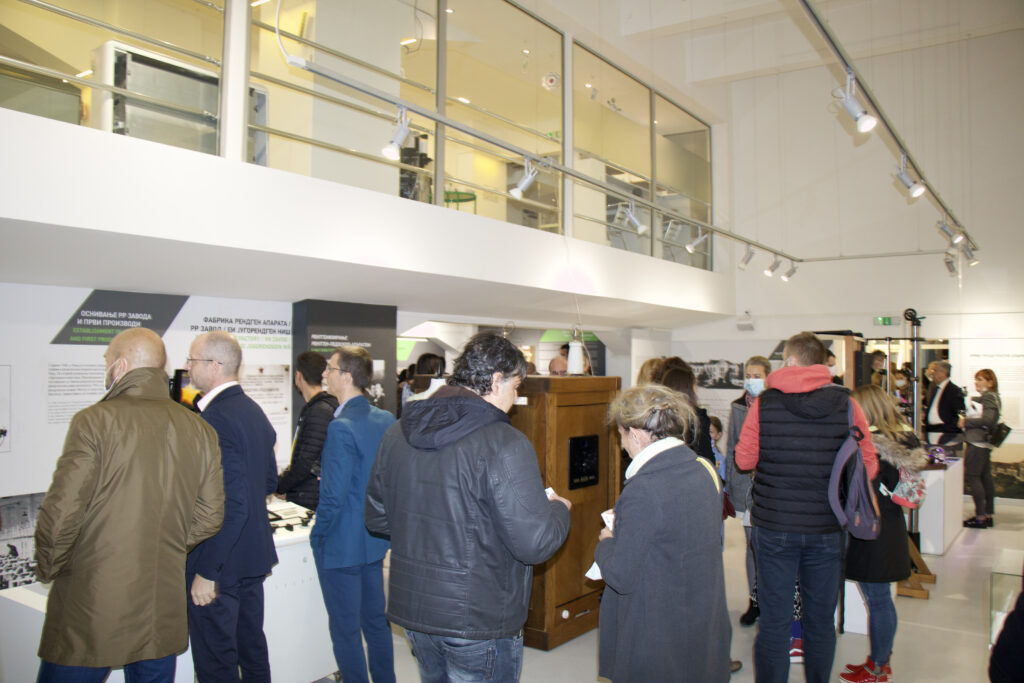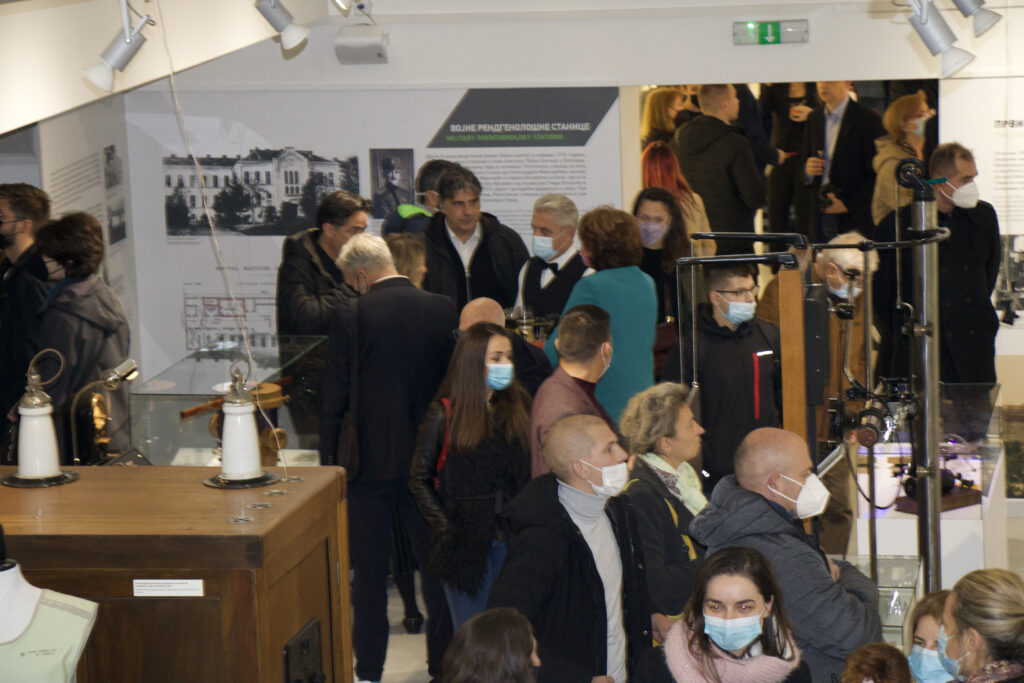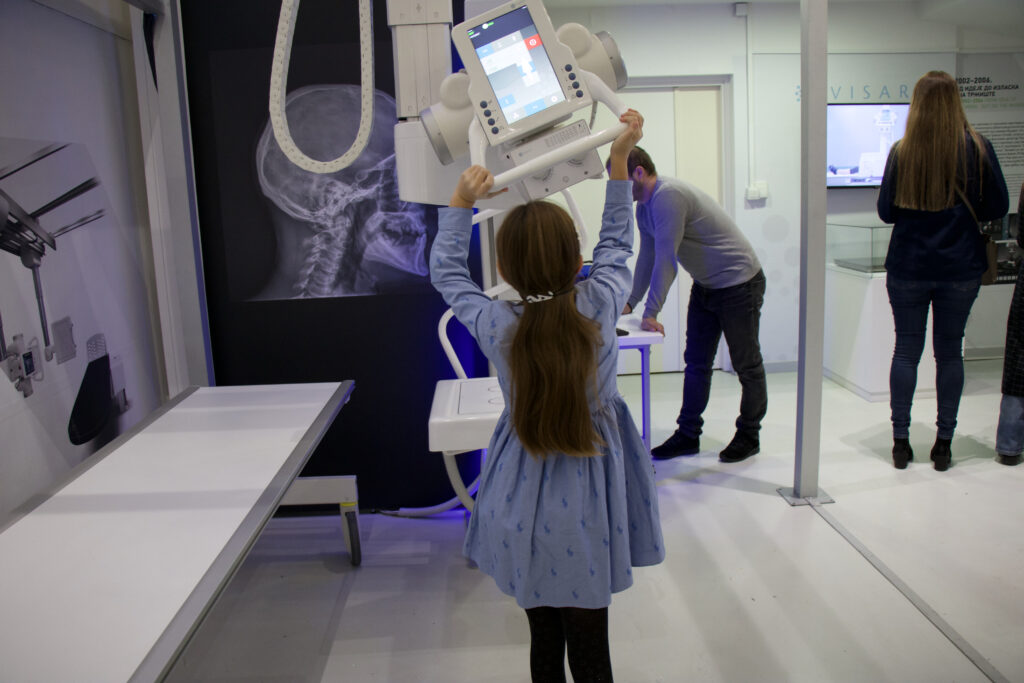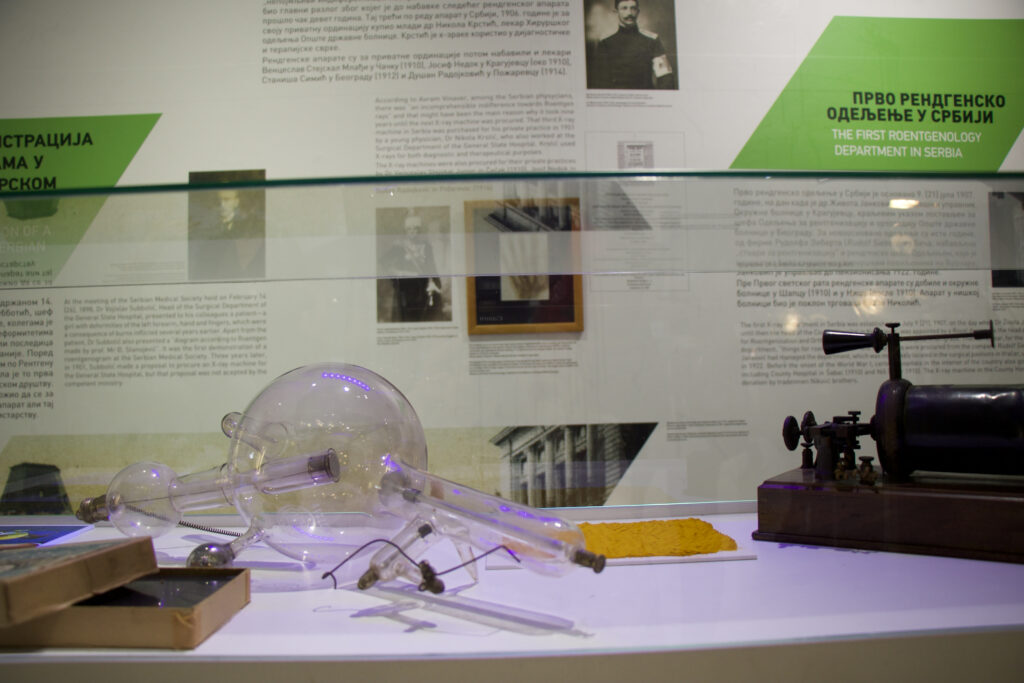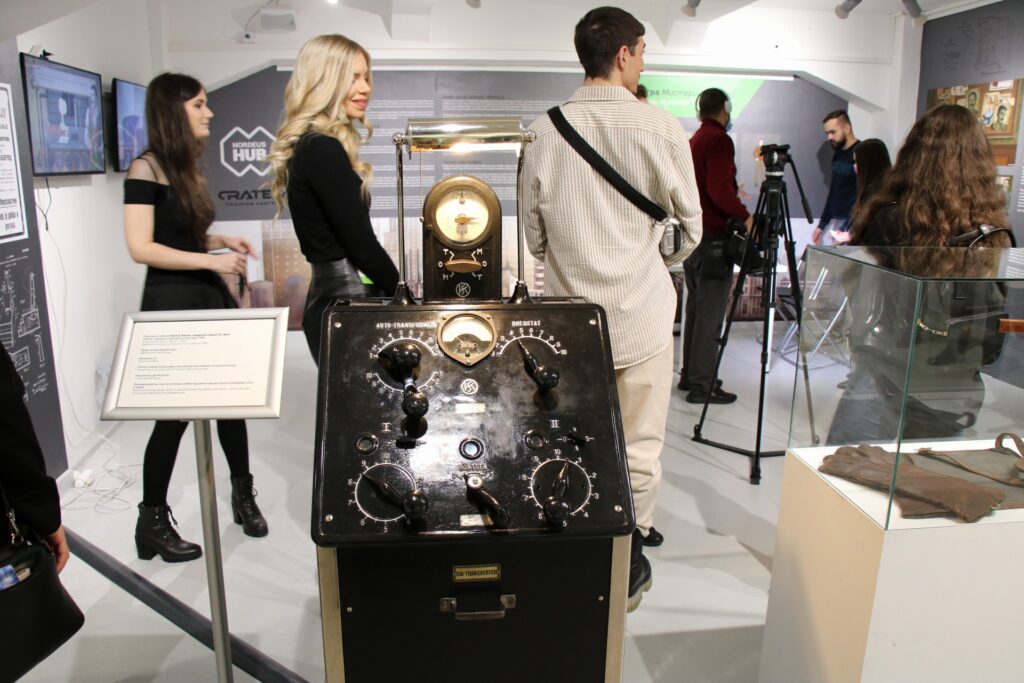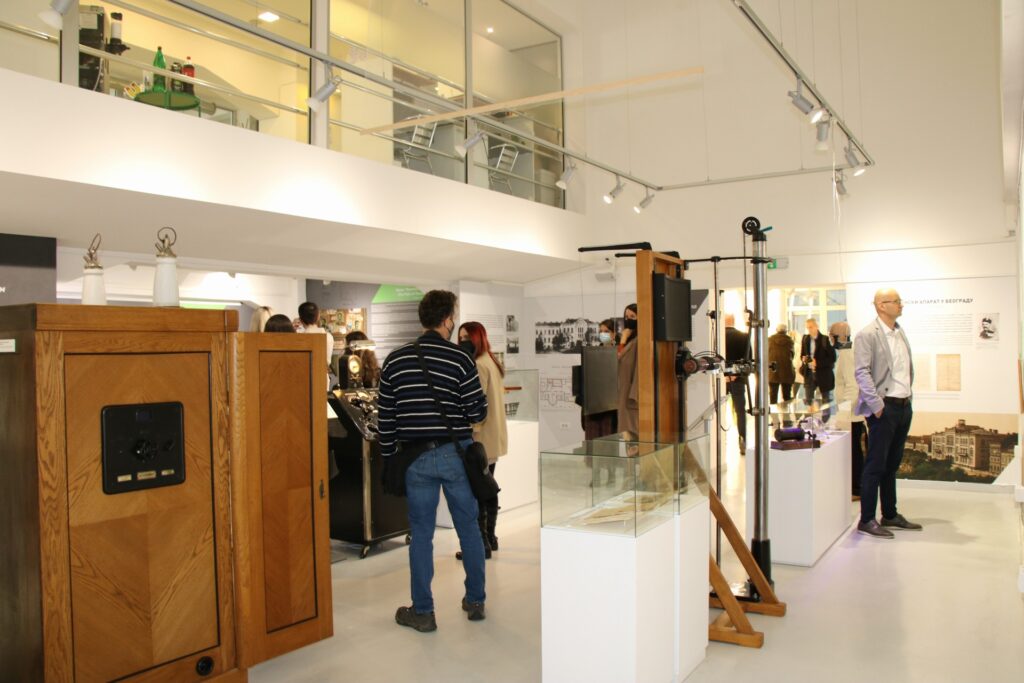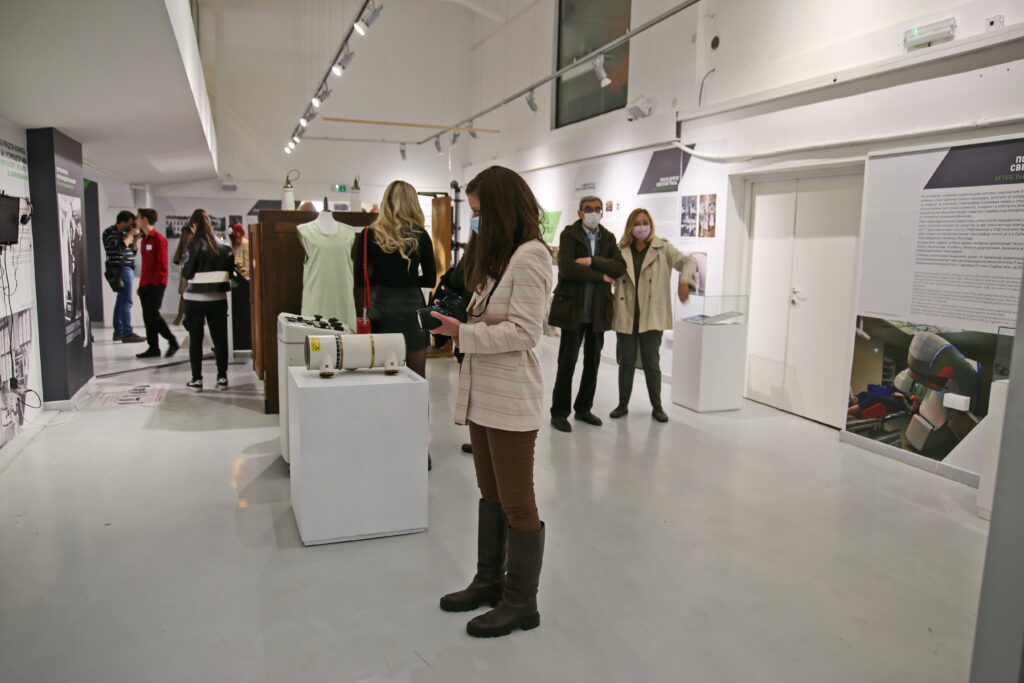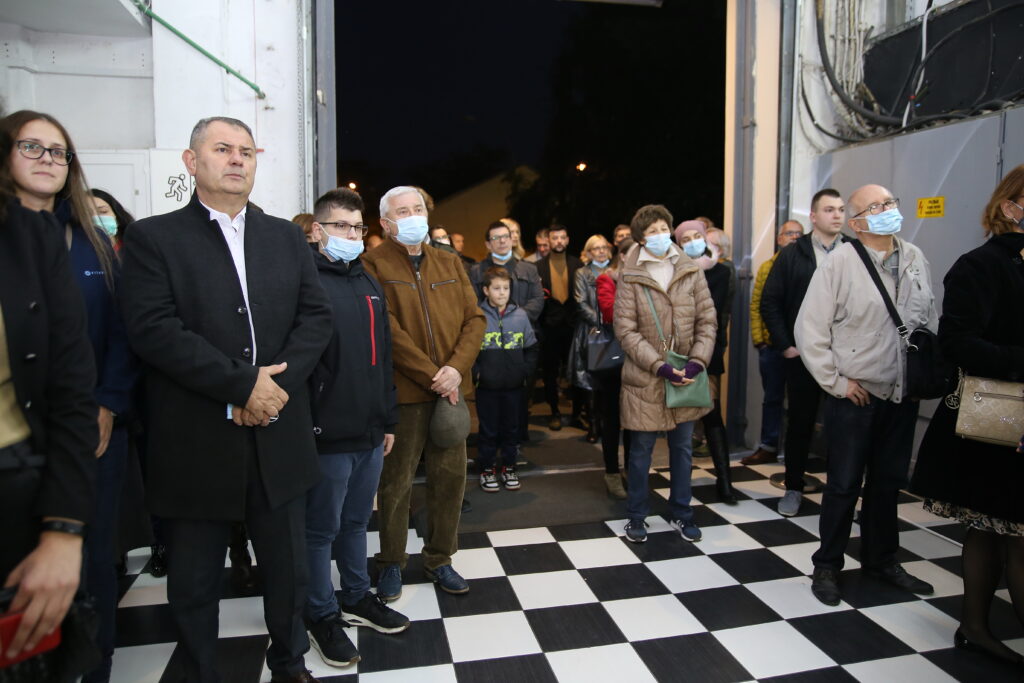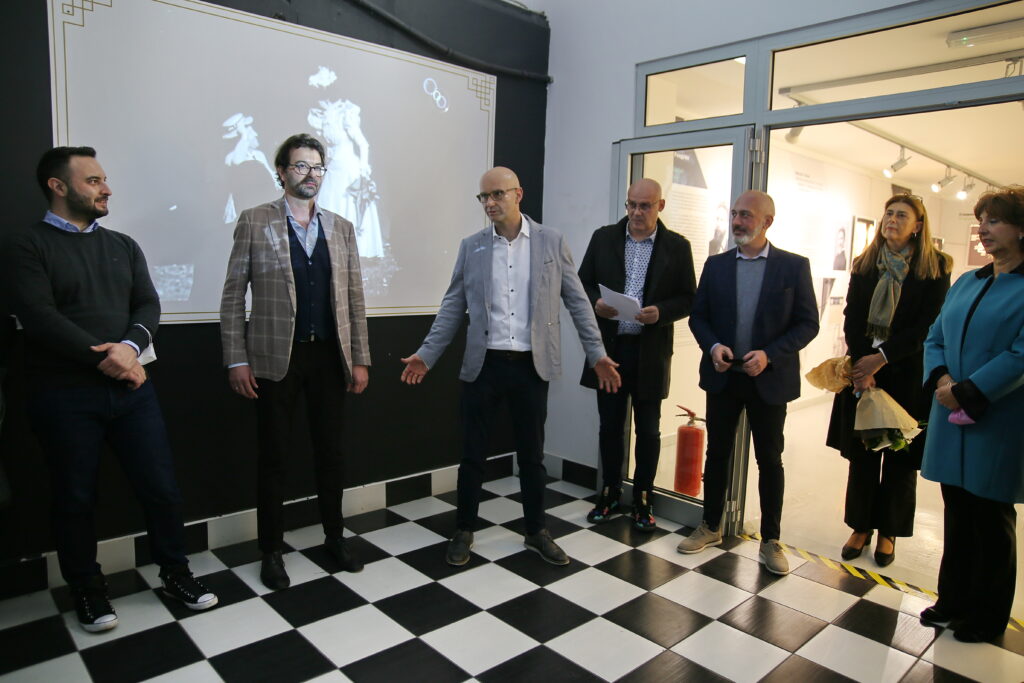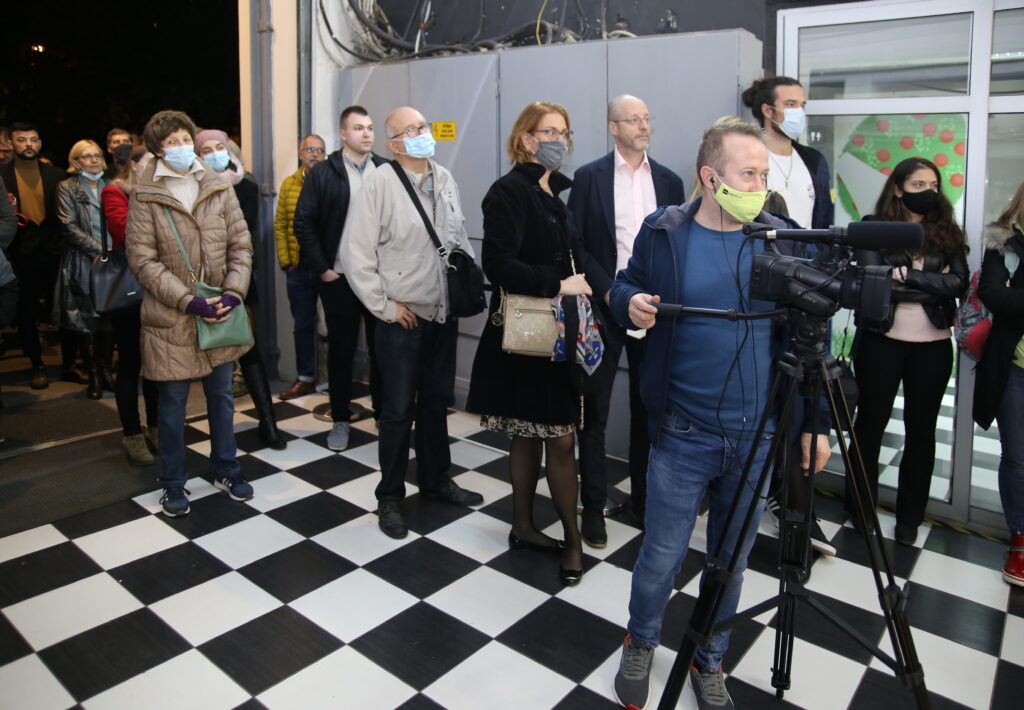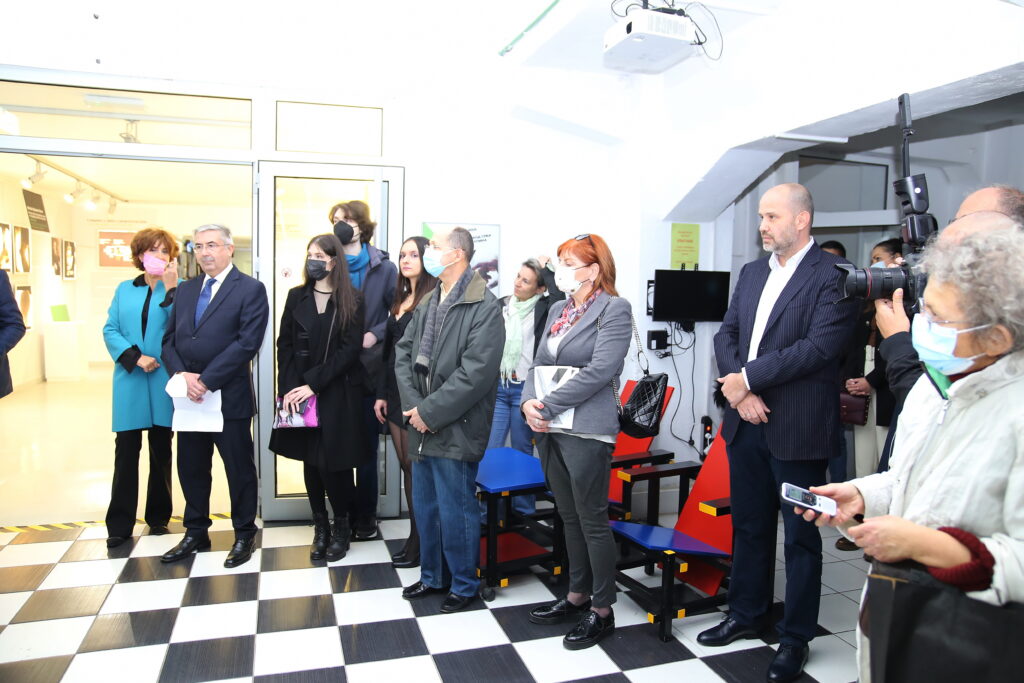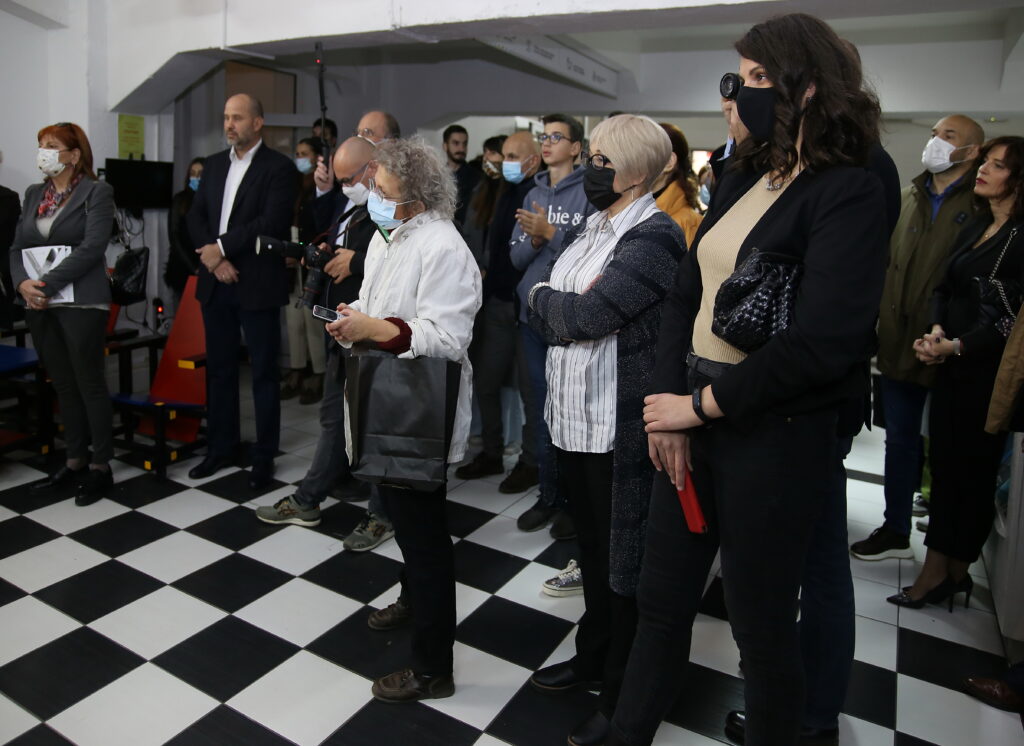01 Nov PRESS CONFERENCE AND OPENING OF THE EXHIBITION – DEVELOPMENT AND APPLICATION OF X-RAY TECHNOLOGY AMONG SERBS – FROM TESLA AND PUPIN TO MODERN TIMES
Gallery 51, October 27 – November 30, 2021
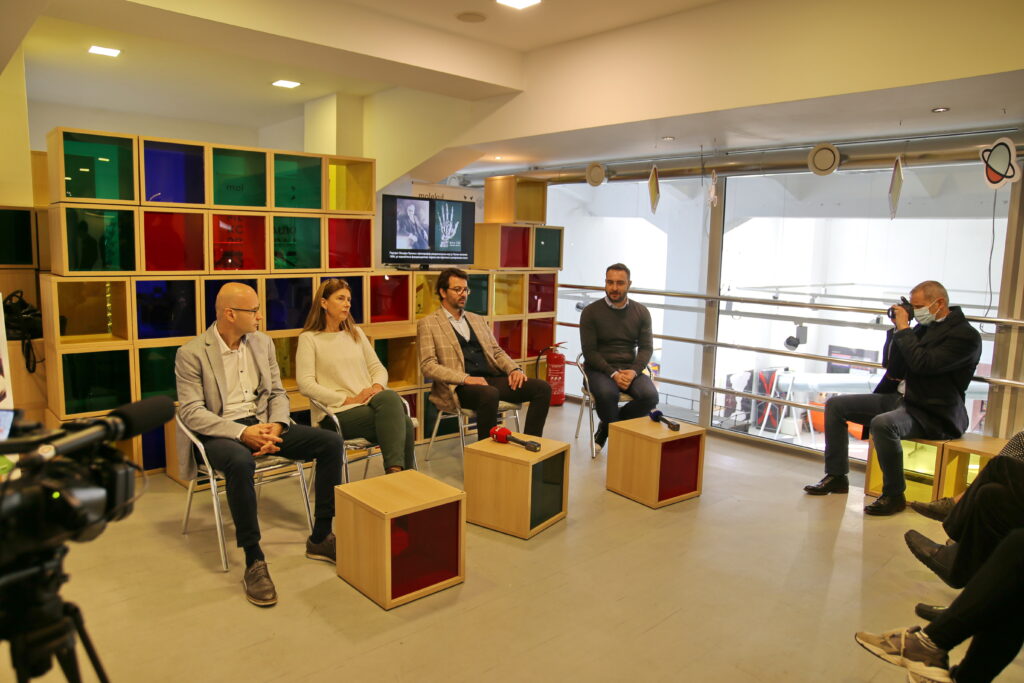 The Museum of Science and Technology unveiled the exhibition titled “Development and Application of X-Ray Technology among Serbs – from Tesla and Pupin to the present day”. The exhibition was organized by the Museum of Science and Technology and Visaris with the support of the Ministry of Culture and Information of the Republic of Serbia. The authors of the exhibition are Jelena Jovanović Simić, Aleksandar Vl. Markovic and prof. dr. Vladimir Petrović; the authors of the design of the exhibition are Ozarija Marković Lašić and Nebojša Vasiljević; the graphic design of the exhibition catalog was done by Miloš Janković, and the music for the exhibition was composed by Aleksandar Vl. Markovic. Educational computer games for children and youth were created by the best participants in free educational programs for game development, of the Nordeus Hub and the Crater Training Center.
The Museum of Science and Technology unveiled the exhibition titled “Development and Application of X-Ray Technology among Serbs – from Tesla and Pupin to the present day”. The exhibition was organized by the Museum of Science and Technology and Visaris with the support of the Ministry of Culture and Information of the Republic of Serbia. The authors of the exhibition are Jelena Jovanović Simić, Aleksandar Vl. Markovic and prof. dr. Vladimir Petrović; the authors of the design of the exhibition are Ozarija Marković Lašić and Nebojša Vasiljević; the graphic design of the exhibition catalog was done by Miloš Janković, and the music for the exhibition was composed by Aleksandar Vl. Markovic. Educational computer games for children and youth were created by the best participants in free educational programs for game development, of the Nordeus Hub and the Crater Training Center.
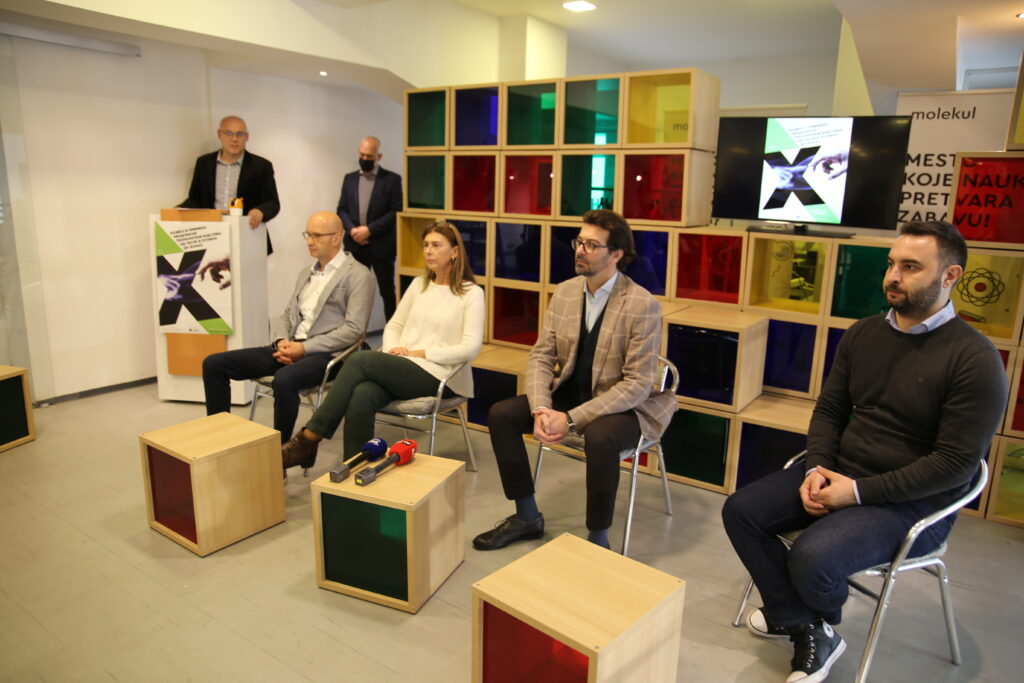
The exhibition presents the historical development and application of X-ray technology in medicine, from the discovery of X-rays to the present day, with special emphasis on the contributions made by Nikola Tesla and Mihajlo Pupin in the field of radiology. The goals of the exhibition are also to present the success of domestic companies in the development of the production of X-ray machines and equipment.
The Virtual exhibition with a 360-degree photo presentation and catalog is available on this LINK
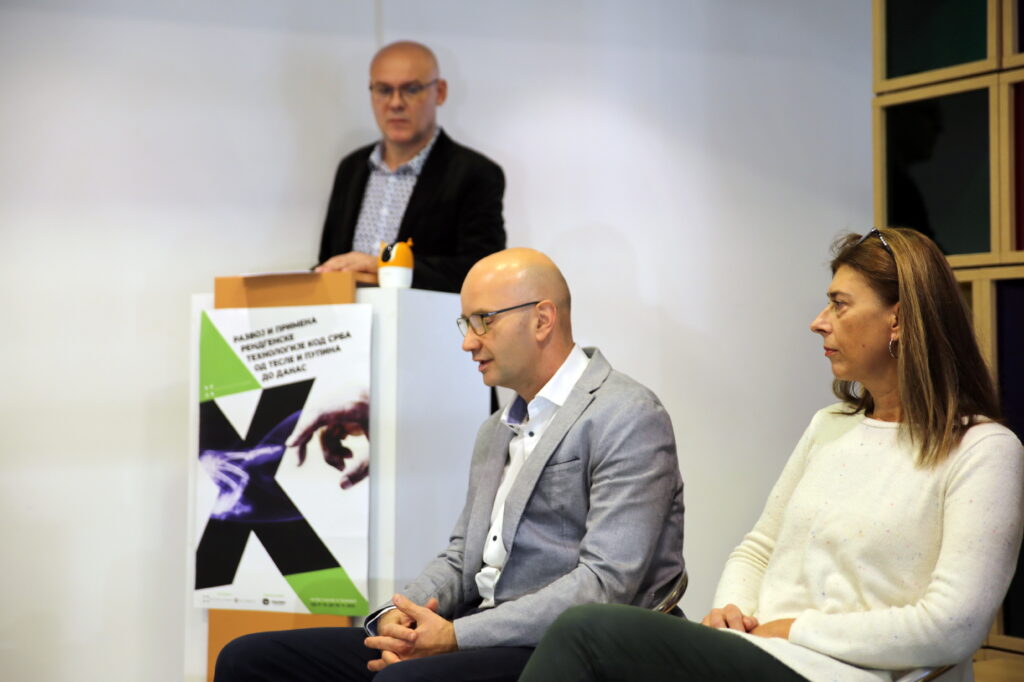
Jelena Jovanović Simić stated that “with the exhibition they wanted to emphasize something that is less known, and that is that our scientists Nikola Tesla and Mihajlo Pupin made a significant contribution to the improvement and application of X-rays, especially in diagnostics.” The exhibition was an opportunity to show the public for the first time an X-ray cabinet from the 1930s, which was one of the first exhibits the museum received when it was founded in 1989. With the exhibition, we wanted to show the visitors the path of development of X-ray technology, and visually, so at the beginning of the exhibition we set up equipment for X-ray production used by X-rays, Pupin and Tesla, which reached Serbia in the late 19th century (1897). Next, the exhibition takes us to the part about Jugorendgen where you can see their best-selling Selenus 4 device, and finally to the part where Vizaris is presented with their latest generation digital X-ray. In this way, we have completed the story through time, but also through all those people who were visionaries who contributed to the advancement of X-ray technology and its application in our country, when in the world. “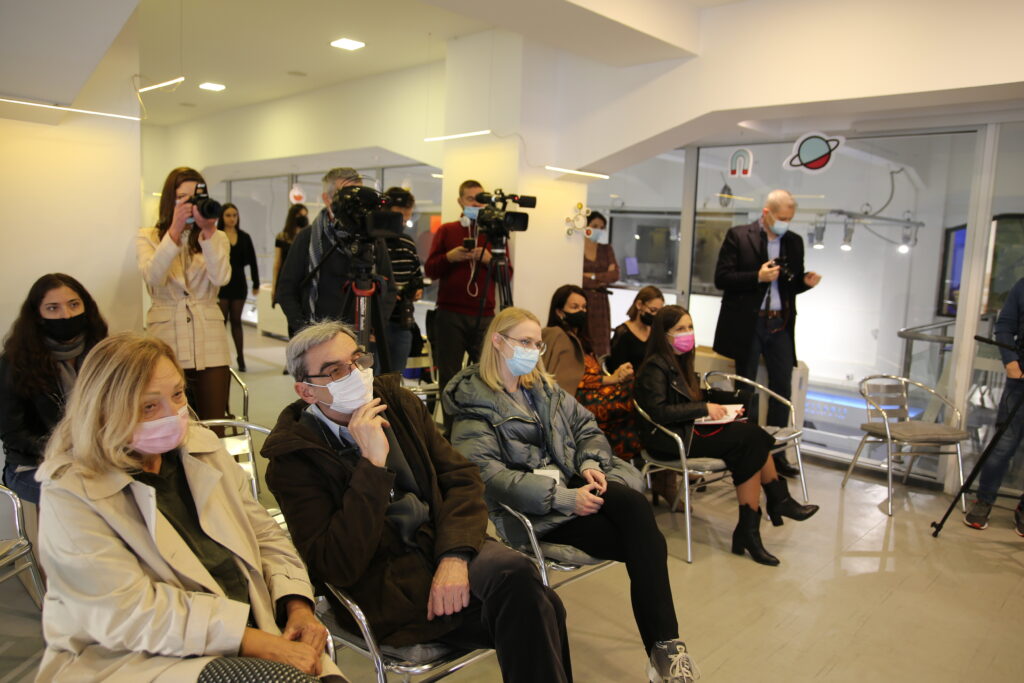
Aleksandar Vl. Markovic “The idea for the exhibition started from the historical connection between the second and fourth industrial revolution, where Serbian scientists left significant results from the second half of the 19th century until today when we have numerous Serbian companies present on the digital world market. Also, the topicality of the exhibition coincides with the current very important role of X-rays in the first diagnosis of Kovid patients, as well as specially designed domestic mobile X-rays that significantly facilitated the fight in Serbia and abroad during the pandemic. Digital contents at the exhibition “VR” Tesla and X-rays “, thematically designed games for young people, original music for the exhibition and VR are aimed at bringing closer and easier understanding of complex topics and motivating some new young Serbian scientists”
Prof. dr. Vladimir Petrović ”Digital radiology has brought the greatest changes in 125 years of radiology history. The film and analog process that have been a symbol of this branch for over a century have been replaced by significantly higher quality digital recordings and several times faster operation. But their potential is still being discovered by research and development Modern technologies such as artificial intelligence, automation and digital signal processing enable new ways of recording in high quality and dynamics that have the potential to show the body and its functions in unprecedented levels of detail and thus significantly improve diagnostics available to all. Some of the exhibits in this exhibition are aimed at bringing these technologies closer to visitors. 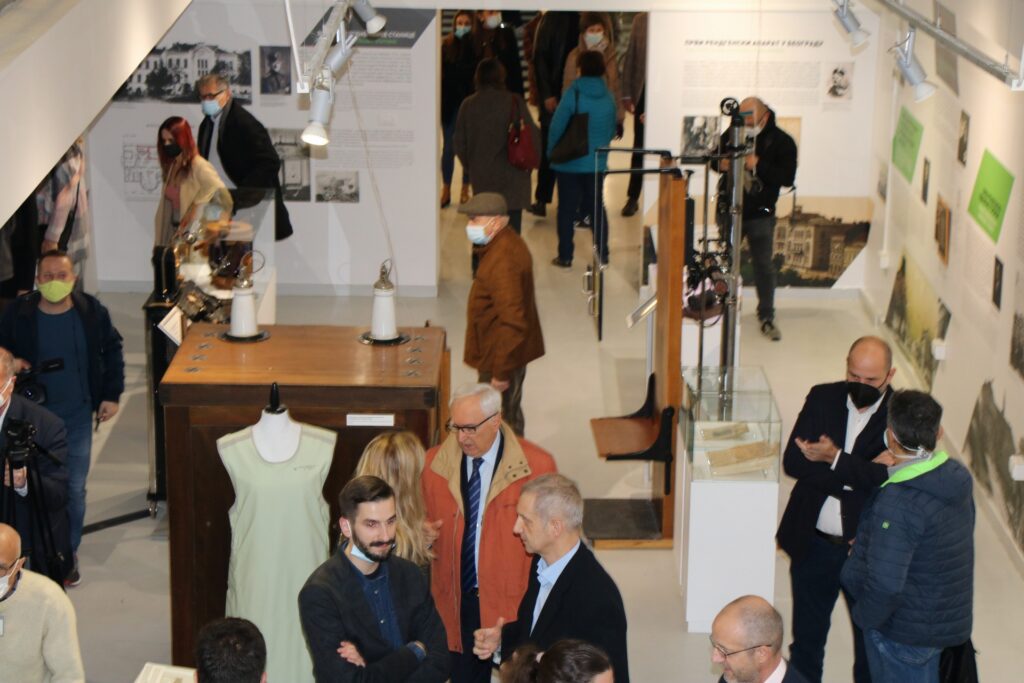
In the second half of the 20th century, during the intensive development of industry in the former Yugoslavia, the Jugorendgen factory (part of the Nis Electronic Industry) was the only one in the Balkans to produce X-ray machines and export them worldwide. After the disintegration of Yugoslavia, the crisis of the 1990s and later transition processes during which many industrial companies, including Jugorendgen, ceased to operate, a group of young experts founded Visaris at the beginning of the new millennium and began developing and manufacturing a new generation of digital X-ray machines. Like Jugorendgen in the past, Visaris is today the only manufacturer of X-ray machines in the region, and it is also present on the world market.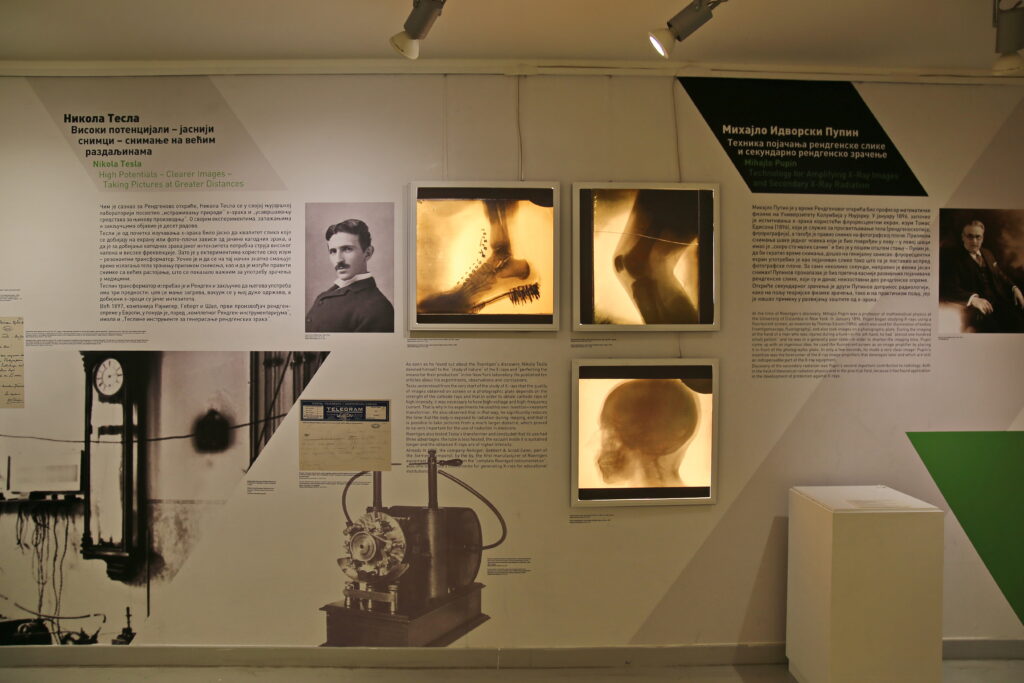
In addition to promoting Serbian scientific achievements in this important field of medical diagnostics and therapy, the goals of the exhibition are to improve knowledge in the history of medicine and the history of industrial development in Serbia and popularize science, especially among generations growing up in the current digital age.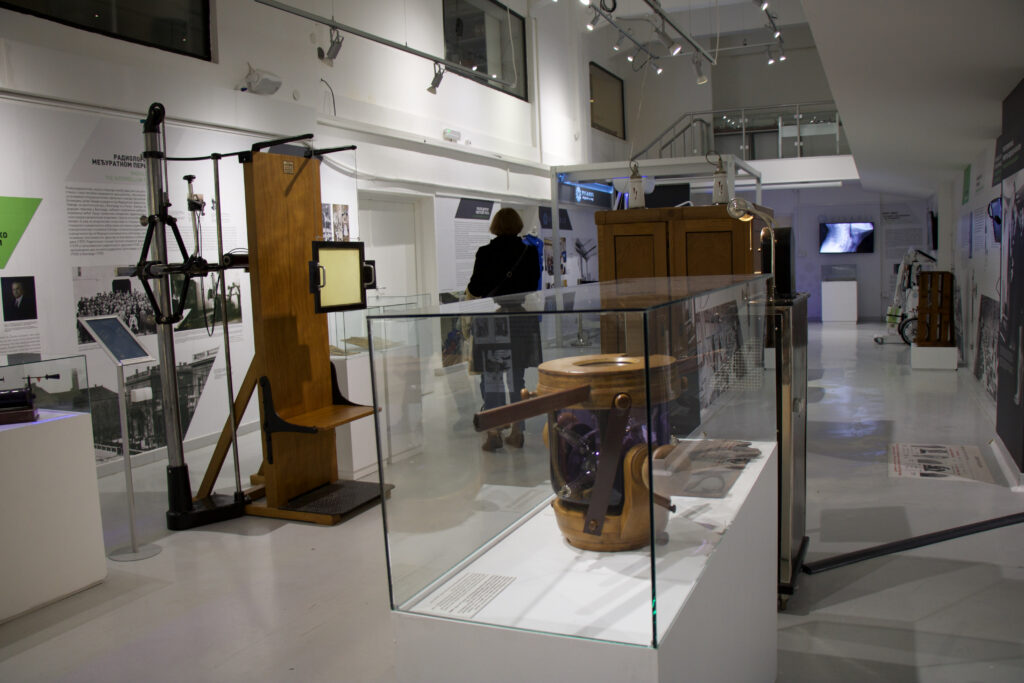
In addition to photographs and documents, the exhibition also includes old X-ray machines, equipment and means for personal protection against radiation, the first X-ray tubes manufactured in Yugoslavia, but also the latest digital X-ray devices. An integral part of the exhibition are contents in the form of virtual reality (VR) and educational digital games for children and youth created by the best participants of free educational programs for game development, friends of the exhibition Nordeus Hub and Crater Training Center. During the exhibition, professional guided tours, lectures and educational workshops for children, youth and students will be organized.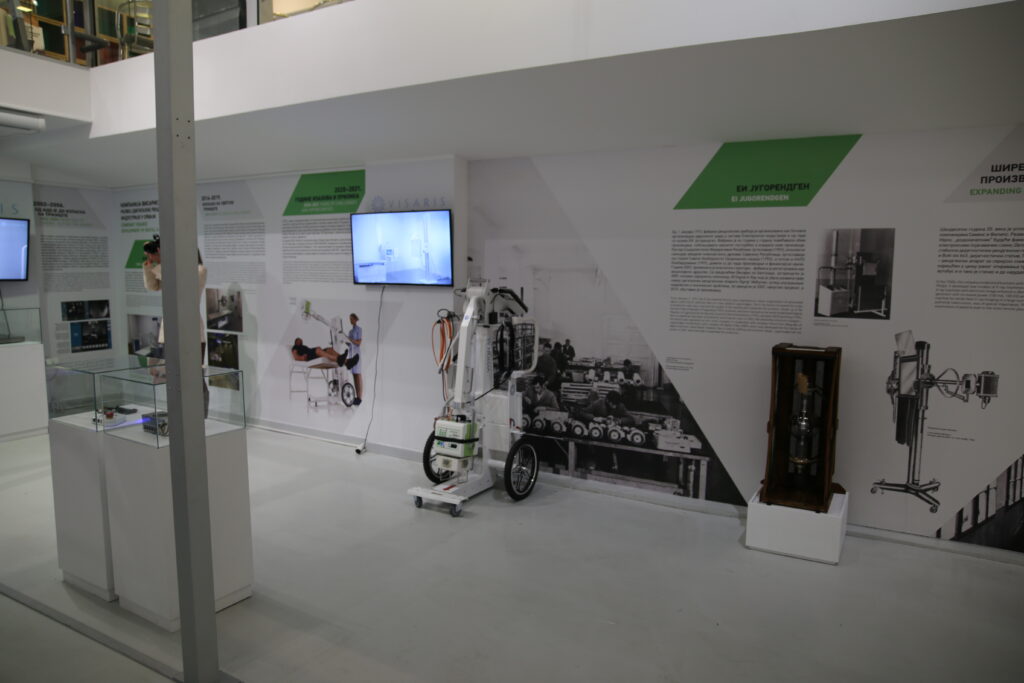
The exhibition was opened by prof. Dr. Jovica Shaponjski, President of the Section for Radiological Diagnostics of the Serbian Medical Association. Among the guests were representatives of the Serbian Medical Association, the Serbian Academy of Sciences and Arts, the IT sector, as well as many prominent doctors and experts in the field of information industry and entertainment. 